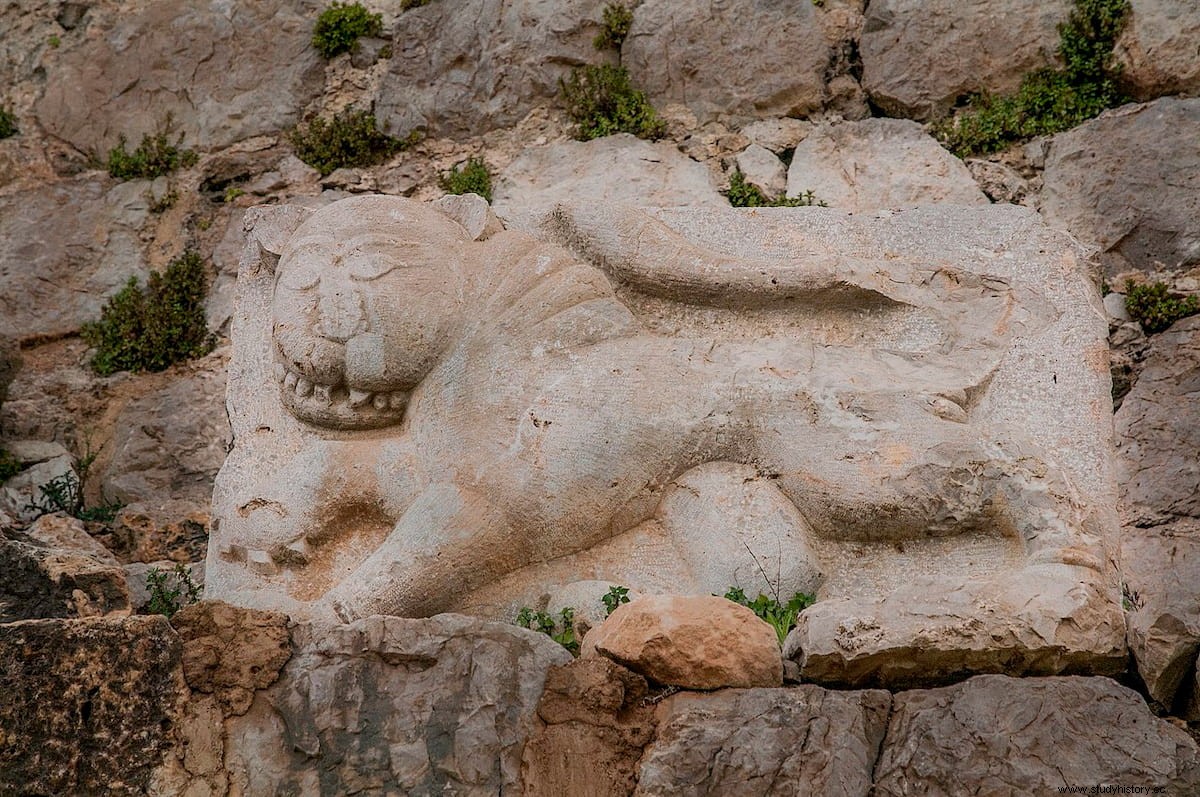We are used to thinking that all the medieval castles erected in the Levant are the work of the Crusaders, or at least the Christian kingdoms that dotted the area at the time of the Crusades. But nothing could be further from the truth, and one of the best examples of this is the impressive fortress of Nimrod.
It was built around the year 1228 by Al-Aziz Utman, Saladin's nephew, to protect Damascus during the Sixth Crusade, on the southern slope of Mount Hermon and along a ridge located 800 meters above sea level.
This earned it the Arabic name of Qal'at al-Subeiba (castle of the great precipice ). Nimrod's appellation is later, from the 19th century, possibly a reference to the biblical Nimrod mentioned in Genesis.
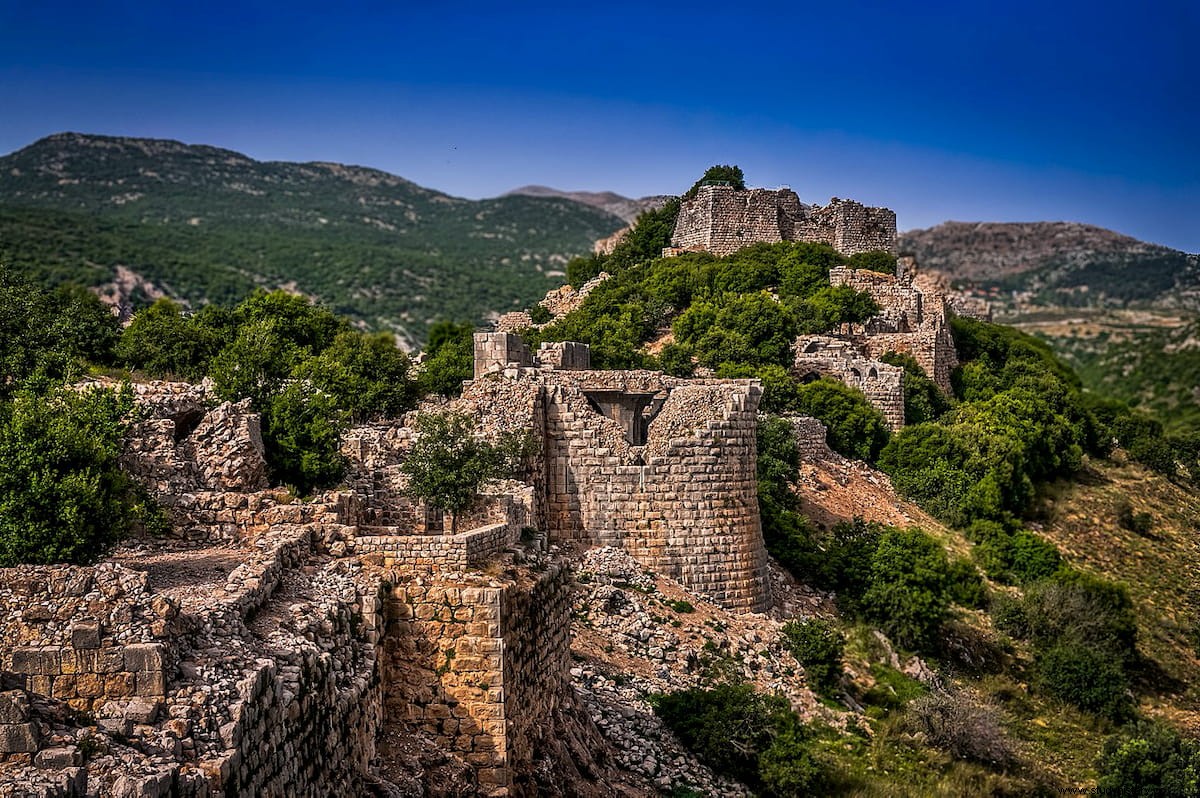
From its position it dominates the Golan Heights, the plateau that today forms the border between Lebanon, Jordan, Syria and Israel, and the access to the west between Galilee and Damascus. The enclosure is 420 meters long by 150 wide, surrounded by a wall with rectangular and semicircular towers built with large stone ashlars.
The castle was taken by the Mongols in 1260 and recovered by the Mamluk sultan Baibars after the battle of Ain Jalut, on September 3 of that same year, who enlarged and reinforced it with six new towers and the extension of two others. According to Ronnie Ellenblum, these works carried out by Baibars are exceptional for their sophisticated and careful execution, not found in any other fortress in Palestine. The main sophistication lies in the vaulted roofs of the Towers, built with square layers of stones, while the domes of that period were usually built with a series of circular layers that diminished in circumference. In all octagonal towers, the roof rests on a central pillar, which makes the construction even more complicated. Baibars construction finish is complete.
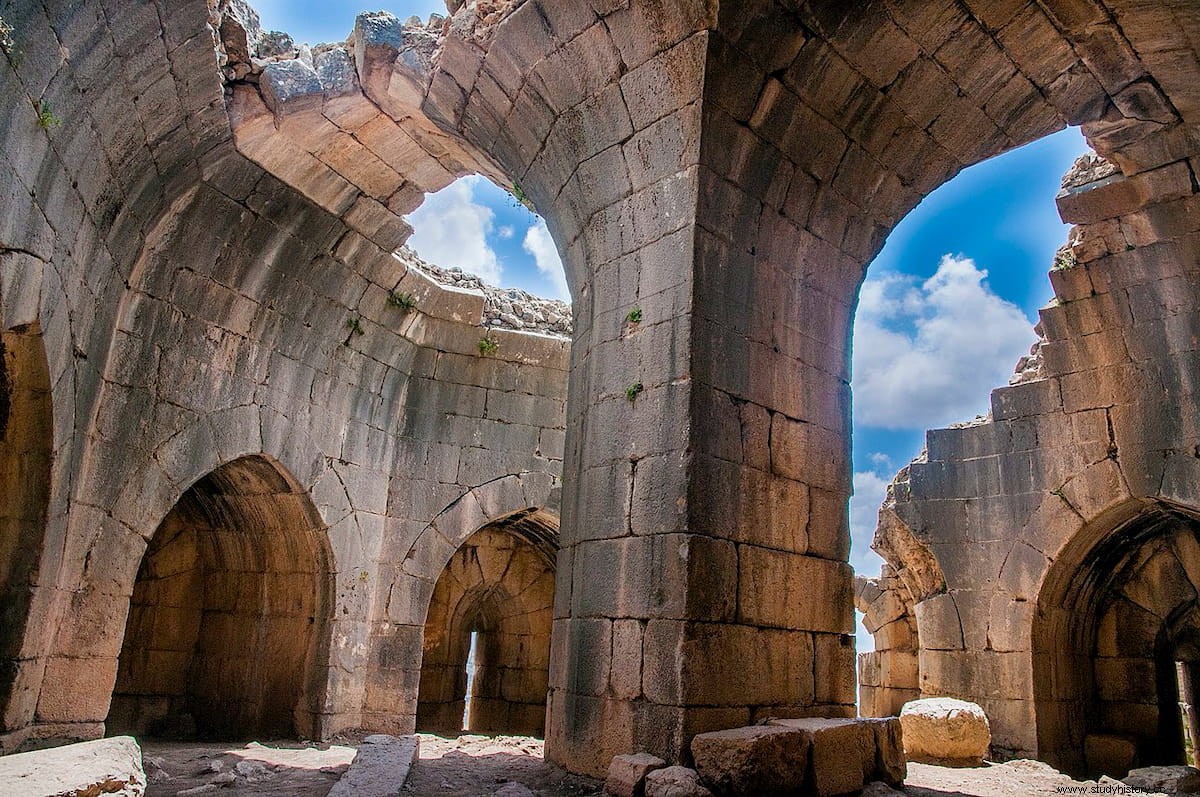
The inscription commemorating the expansion of Baibars is still visible in situ, dating from 1275. It is near the western gate, inside the fortress. Its four lines engraved on 5 granite stones are 6 meters long and are the largest and most imposing inscription found so far in the area (Israel-Syria-Palestine). Two other earlier inscriptions, mentioning the works of Al-Aziz Utman in two different periods, are also preserved.
After the end of Crusader rule in the area, the fortress slowly fell into decay. The Ottomans used it as a luxury prison for noblemen from 1517 until the end of the 16th century, when it was permanently abandoned.
An earthquake in October 1759 affected parts of Nimrod Castle, although most of the towers were not severely damaged.
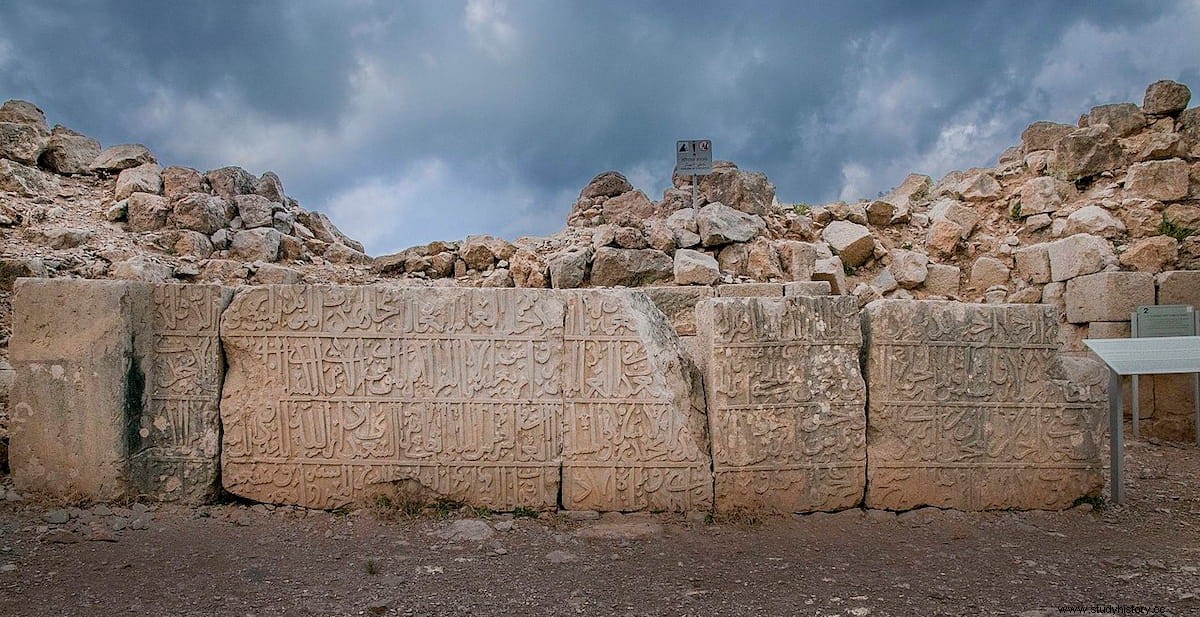
In the 1920s, the French placed a battery of cannons making a hole in the western wall, through which the fortress is accessed today, in order to suppress the Arab and Druze revolts. During the war between Syria and Israel, the façade also suffered some damage.
Today a good part of the masonry is still standing, as well as a multitude of passageways (one specially built to be able to leave the fortress without being discovered by the enemy), spiral staircases and water cisterns that keep part of the original plaster still visible. .
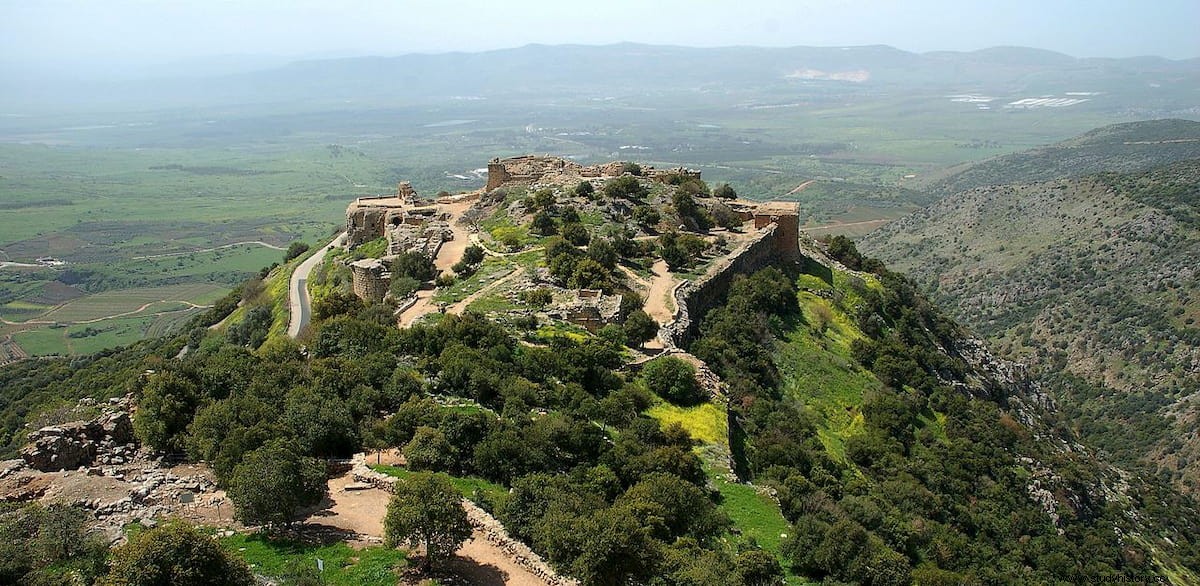
In the central area of the fortress are the ruins of the homage tower, surrounded by large rectangular towers. In the western area is the original castle compound, protected by its own moat and drawbridge.
There are also some six reliefs of lions, the royal symbol of the Mamluk sultan Baibars. Yet it is still the largest and best preserved of all the medieval fortresses in Palestine.
The Israel Nature and Parks Authority allows tourists and the curious to visit the fortress compound and the archaeological site, which are a National Park.
